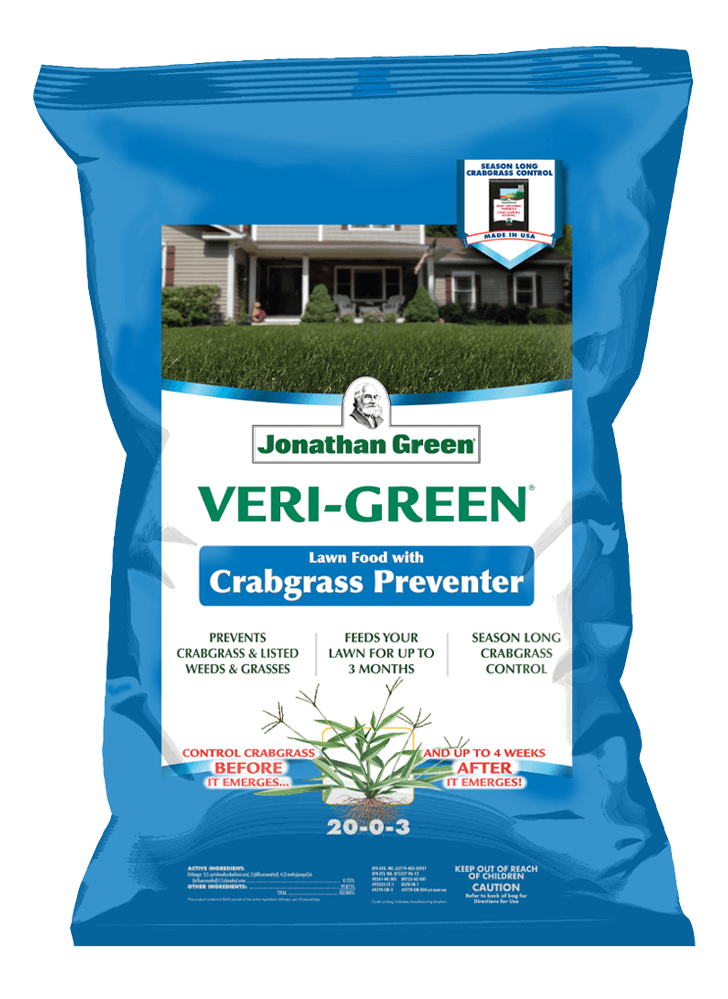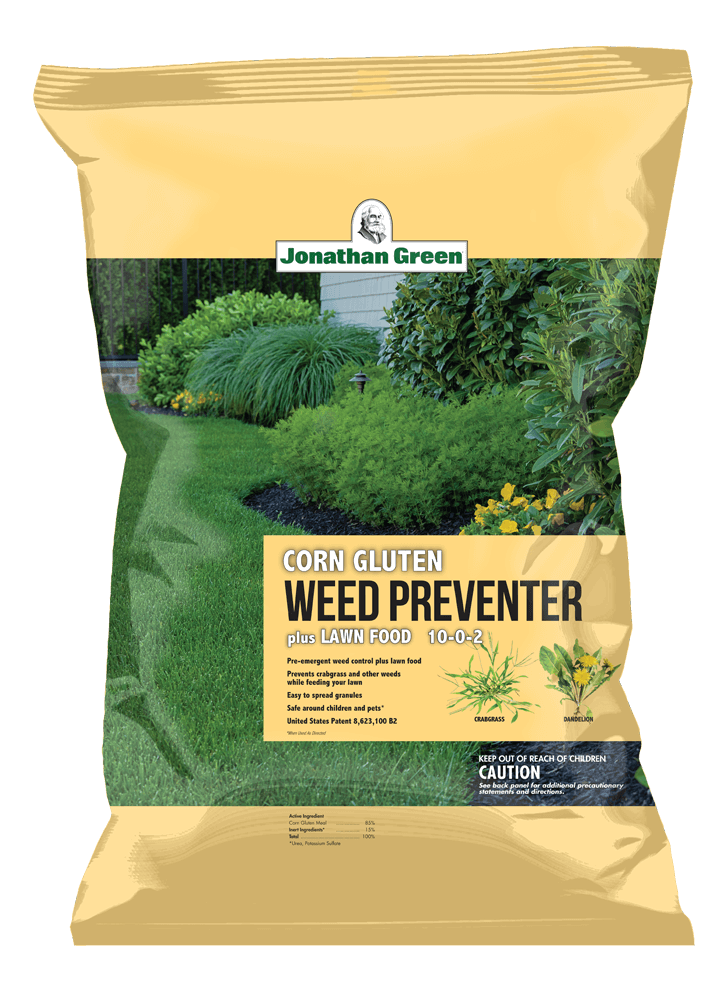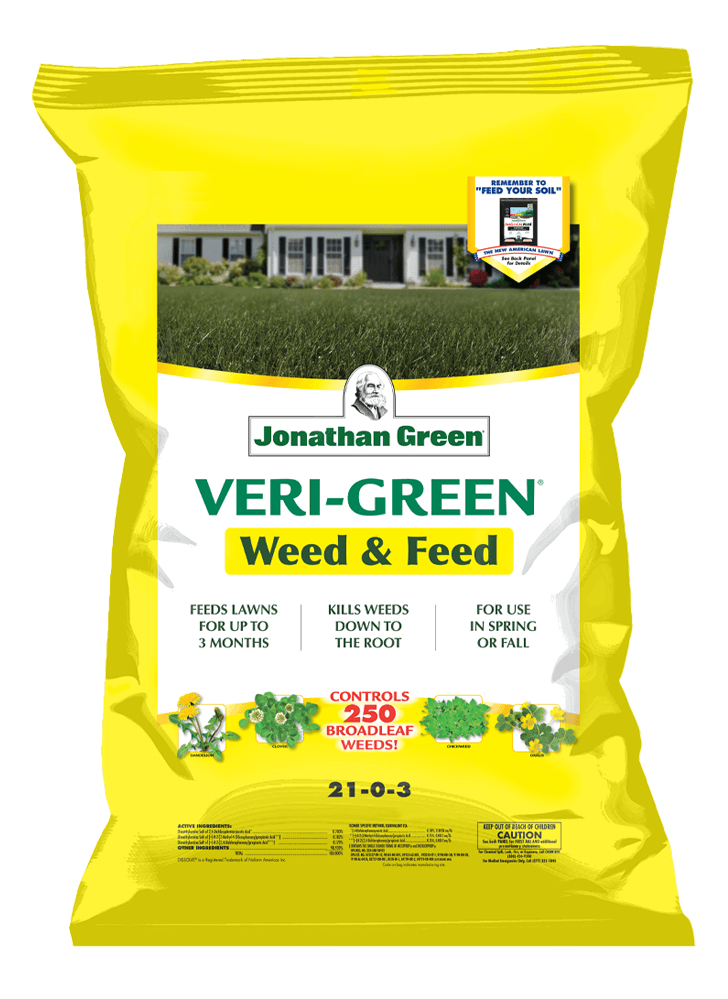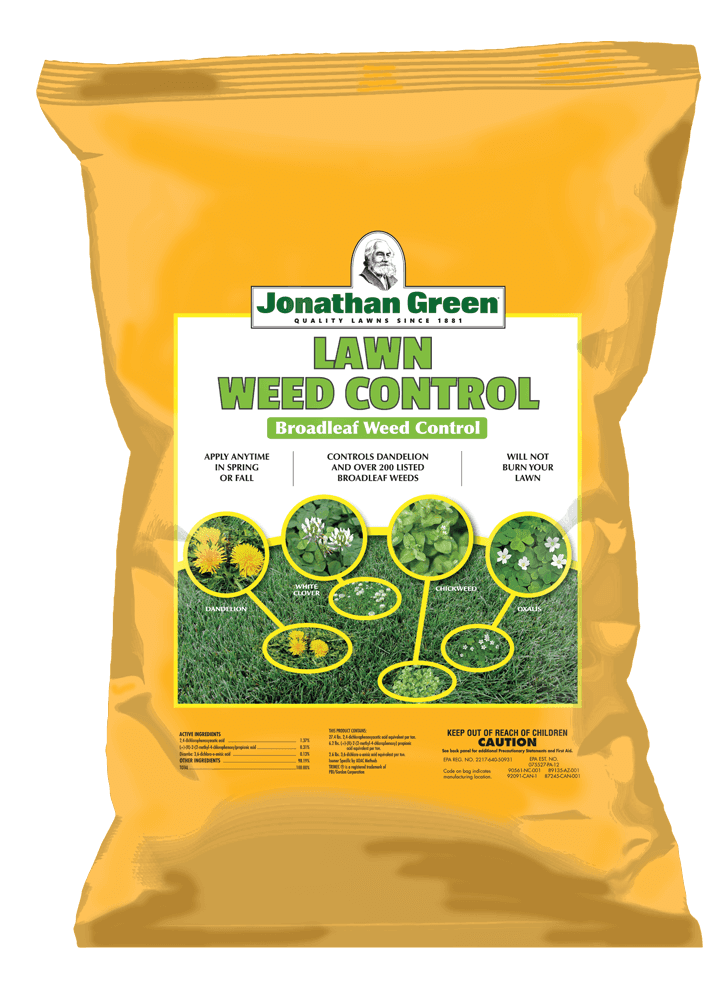How to Control Weeds
So where did all of your weeds come from?
They were always there. Weed seeds can remain dormant in the soil for years. Weeds wait until the proper environment is created to grow. Tilling the soil, while creating a nice seed bed, brings dormant and buried weed seeds to the surface. Top soil has weed seed in it and carries problems, as well. Processed loam is not weed-free. Mulches have weeds in them. Even wind spreads weed seeds as it blows. Yes, the bad news is weeds are everywhere. The good news is they can be properly controlled.
Controlling Weeds with a Thick, Healthy Lawn
Weeds growing in a lawn disrupt the visual uniformity of it. The irregular leaf shapes, growth habits, and color differences of weeds make them highly undesirable for most lawn owners. Weeds are symptomatic of a weakened turf, not the cause of it. Understanding this fact helps explain the major reason for weed encroachment into turf. Thin grass, bare spots, and poor growth are the key factors that allow weeds to invade desirable lawn areas. Such conditions happen because of the following:
- Planting inferior grass seed varieties.
- Poor soil management, such as improper pH, soil compaction, and lack of organic matter.
- Bad turf management, like inadequate fertilizer programs which greatly overuse synthetic nitrogen.
- Low mowing height that injures healthy grass.
- Excessive wear patterns caused by equipment activity. It is evident that a healthy growing lawn via better cultural practices is your first – and best – line of defense against weeds.
Types of Weeds
Lawn weeds can be divided into two basic groups – grassy weeds (crabgrass, goosegrass, orchardgrass, etc.) and broadleaf weeds (dandelions, clover, chickweed, etc.).
If weed seeds are unavoidable, how can we treat them?
Selective herbicide classifications
Selective herbicides are classified as pre-emergents or post-emergents. There are differences between both types. We’ve explained them below.
Pre-emergent lawn weed control
Pre-emergent herbicides. These type of herbicides are applied to the lawn prior to weed seed germination and form a barrier to them at, or right below, the soil surface. Pre-emergents work by preventing cell division during seed germination.
Veri-Green Crabgrass Preventer plus Lawn Fertilizer. This combination of lawn food and grassy weed preventer feeds lawns for up to three months and provides both pre- and post-emergent crabgrass control. Veri-Green Crabgrass Preventer plus Lawn Fertilizer not only prevents crabgrass (and many other grassy weeds) all season but also controls crabgrass after it grows up to the third-leaf stage! Veri-Green Crabgrass Preventer plus Lawn Fertilizer can be applied as early as mid-March or as late as early June.
*Additional pre-emergence hints:
- Crabgrass does not grow in shade. Therefore, reduce your use of crabgrass control products by applying them only in sunny areas of the lawn.
- If Annual Bluegrass (Poa annua) has been a problem in the lawn, a second application of Veri-Green with Crabgrass Preventer can be applied around Labor Day to provide control of the problematic lawn weed.
Corn Gluten Weed Preventer. This organic pre-emergent controls the most common grassy and broadleaf weeds, including crabgrass and dandelions. It must be applied early in the spring as a pre-emergent, before crabgrass or broadleaf weeds germinate. Corn Gluten Weed Preventer contains a patented corn gluten that feeds the lawn for eight weeks and is safe to apply where children and pets play.
Post-emergent lawn weed control
Post-emergent broadleaf herbicides are applied directly to actively growing weeds in the lawn. They are effective in controlling a great variety of broadleaf weeds such as dandelions, plantains, chickweeds, ground ivy, speedwell, and many others. Successful control happens only when the herbicide granule adheres to the leaf of the weed. Therefore, apply broadleaf weed controls in the early morning to a dew-filled lawn or immediately after watering the lawn. Accordingly, make sure there is no rain forecasted for two days after application. Do not apply broadleaf weed controls when temperatures are consistently above 85°F. Refrain from mowing for two days before or after application. Grass seed can be applied four weeks after application.
Veri-Green Weed & Feed Lawn Fertilizer. This combination of lawn food and weed control feeds lawns for up to three months and tackles over 250 broadleaf weeds, including dandelions, chickweed, plantain, and clover. Veri-Green Weed & Feed Lawn Fertilizer has a three-way herbicide formula to ensure smaller, less leafy weeds get killed, too.
Lawn Weed Control. If you have just fertilized and did not use a broadleaf weed killer, then you may apply Lawn Weed Control (with NO fertilizer) to the turf. Like Veri-Green Weed & Feed Lawn Fertilizer, Lawn Weed Control kills over 200 broadleaf weeds. Follow the same application rules (listed above) for broadleaf weed killers.



